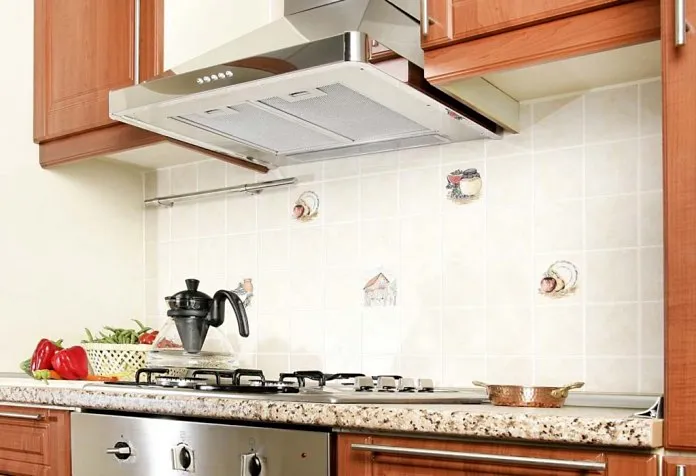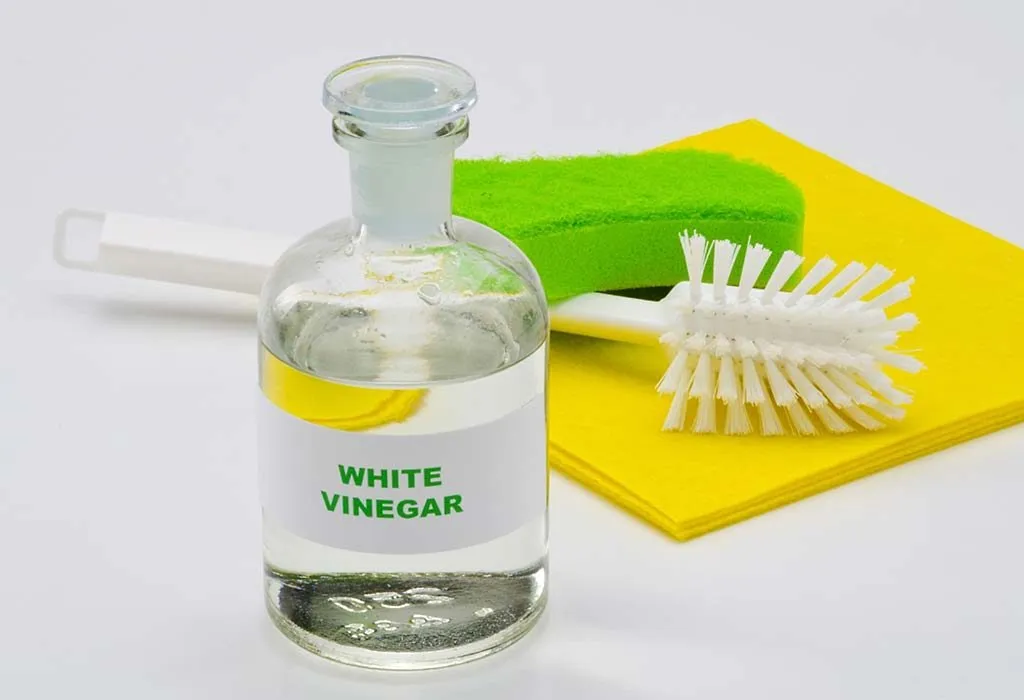How to Clean Kitchen Chimney Grease – 3 EASY Steps!
Do you know that cooking and cleaning can be difficult? It’s not just the grease and mess that you have to clean, but also the sauce and food that got on your stovetop.
Whether it’s a simple task like cleaning the grease off of a stovetop or more complicated tasks like removing cobwebs from an oven, there are plenty of ways to get grease out of your kitchen chimney.
But how do you know if you should clean the chimney or just leave it alone?

How to Clean Kitchen Chimney Grease
The first step is to realize that there are a few things you have to do in order to get grease out of the kitchen chimney.
First, you need to clean the top of the chimney. This includes removing all the build-up, including any cobwebs or food particles that may have been left over from when the chimney was cleaned earlier.
Next, you will need to pour cleaning fluid onto a cloth and use it to reach all the crevices and corners of the chimney. Be sure to wipe down the entire surface of the chimney before putting it back together again.
Lastly, be sure to dry off the chimney after cleaning by using a dryer or an oven.
How to Remove Kitchen Chimney Grease
There are a few ways to remove grease from a kitchen chimney.
The easiest way is to use boiling water. Boil the water and pour it over the grease. Boil for two minutes, and then remove the pan from the heat. This method works best if the grease is very thick.
Another method is to use a plunger. Place the plunger over the top of the saucepan and push and pull until the sauce starts to come down. Keep doing this until all of the grease is removed. If using a plunger, make sure that you have enough water to cover the plunger and the saucepan.
The third way to remove grease from a kitchen chimney is by using an oven cleaner and water. Pour one cup of water into an oven cleaner, and then put it over the top of the saucepan with the heat on low. Use your hands or a spoon to help get rid of any excess water. Repeat until all of the grease is removed.
How to Clean an Oven without Grease
One common approach to cleaning an oven without grease is to use a degreaser. Grease can get on everything in the oven, so it’s important to clean everything before you start cooking. Once everything is clean, you can then start cooking.
Another option is to pour some water onto a stove and use a plunger to push the grease out of the crevices. Be careful not to splash any water onto the fire or your food!
Do it timely
The first and most important thing to remember is that you should clean the chimney as soon as possible. It’s not a good idea to wait until it’s too late to clean it. The grease will start to build up again and it will be more difficult to get it out.
Secondly, make sure that you do it according to the instructions that came with your chimney. Many times, the instructions say to clean the chimney on an hourly or daily basis. You should follow those instructions as they’re the best way to get the most out of your cleaning efforts.
Benefits of Cleaning the Kitchen Chimney Grease
The benefits of cleaning the chimney are many. Not only will it remove the grease and mess, but it can also help to clean your stovetop and oven.
It’s also a great way to improve air quality in your home. Chimney cleaning is usually done in the spring or fall when the leaves are changing color and the dirt and grime are coming out.
Professional advice
If you have any doubts about whether or not you should clean your kitchen chimney grease, it’s time to get professional advice. Chimney cleaning is definitely a difficult task, and it can be dangerous if you don’t know what you’re doing.
It’s important to always consult with an expert before starting any cleaning project, especially if the chimney is in a high-traffic area. If you decide to clean the chimney on your own, make sure to do so in a safe and responsible way.
Recommendations for Cleaning the Chimney
There are a few general recommendations that can be made for cleaning the kitchen chimney grease. The first is to clean the entire chimney religiously every time you clean your oven or stove. This includes all of the parts of the oven and stove, as well as the chimney itself. By doing this, you’ll help to prevent any build-up of grease and mess on your roof or fireplace.
Another recommendation is to use a chimney filter. A chimney filter helps to remove large particles from the air and helps to keep your chimney clean. A good filter costs around $30 and can be found at most hardware stores.
If you don’t have a filter, you can also use an air purifier in your kitchen. These devices work by sucking up smoke and particles from the air, which then is released into the room where you’re cooking or baking.
How to Remove Sticky Residue from a Chimney
Are you always worried about the residue left on your chimney after every fire? Do you know how to remove it? If so, you’re in good company. Theres a reason most people don’t remove the residue – it’s incredibly dangerous! Without removing it, the fumes from the fire will cause your home to become unsafe and even collapse.
The Basics of Chimney Removal
To remove the residue, you’ll need to first identify the source of the residue. You can do this by using a product like Smoke Shield, which will help keep the fumes from reaching your home.
Next, you’ll need to use a chimney scraper to get the residue off of the chimney. Be careful not to hit anything in your way as you move the scraper around. Finally, use a vacuum cleaner to suck all of the residue out of the chimney.
Remove Residue with the Right Tools
If you want to remove residue from a chimney, you need the right tools. If you use a standard chimney scraper, it won’t be able to remove all of the residue. You’ll have to use a special scraper that is specifically designed for this task – and this type of tool can be expensive.
Another option is to use a vacuum cleaner. In order for the vacuum cleaner to work properly, it needs to be set on high power. This will help it push the residues away from the chimney.
How to Remove Residue from a Chimney in a matter of Minutes
There are a few different ways to remove residue from a chimney.
The first is to use a vacuum cleaner. Make sure the cleaner has a filter that will remove all the ash and debris. Put the filter in the top of the vacuum cleaner and turn it on. Aim the cleaner at the chimney and wait for it to start sucking up all of the residues.
Once it starts sucking, start moving the furniture around so that all of the residue is drawn into the vacuum cleaner. Once it’s all gone, let the vacuum cleaner go for a few minutes and then turn it off. If you have an oven, you can place something heavy on top of the oven and turn it on. The oven will suck up all of the residue until it disappears.
Don’t Let Your Chimney Fall Down
If you’re not sure how to remove the residue from your chimney, call a professional. Remove it by using a rake, a vacuum cleaner, or a plunger. Don’t ever try to do it yourself! The fumes from the fire will cause your home to collapse and you could get serious injuries.
Additional Tips for Remove Sticky Residue from a Chimney
If you still don’t know how to remove the residue, there are a few additional tips to keep in mind.
First, make sure you have a chimney cleaning service that is skilled in removing sticky residue. They will be able to do a better job than you ever could.
Second, make sure your fireplaces are properly primed and fueled. This will help prevent any residue from adhering to the wood and causing problems down the line.
Finally, be sure to follow the safety guidelines for chimney cleaning – use caution when working around flammable materials and use a trained professional to complete the job.
Recommendations for Remove Sticky Residue from a Chimney
There are a few things you can do in order to remove the residue from your chimney. The first is to make sure you have all of the tools necessary. This includes a chimney scraper, a hairdryer, and a vacuum cleaner.
Next, you need to clean the surface of your chimney. Make sure there is no ash left on it, and use a detergent and water solution to clean it. Finally, use a heat resistant agent like cooking oil or wax to protect the wood from becoming too brittle.
Does Vinegar Remove Grease From Kitchen Chimney?
Do you know that vinegar can remove grease and oil from the surface of your kitchen stove? It’s true! Vinegar is a great cleaner, and it can even help to prevent black spots on your stainless steel appliances. Just be sure to pour a little bit of vinegar onto the greased surface before using it, and be sure to clean it after each use.
What is vinegar?
Vinegar is a natural, organic material that can be used to clean a wide range of surfaces. It can be used as a cleaner, and it can also be used to prevent black spots on stainless steel appliances.

How does vinegar work?
Vinegar is a natural cleaner. It works by removing grease and oil from the surface of your kitchen stove. Vinegar also helps to prevent black spots on your stainless steel appliances.
How to use vinegar to clean your kitchen stove
To use vinegar to clean your kitchen stove, first pour a small amount of vinegar onto the greased surface. then use a cloth or sponge to clean the area. You can also use a scrubber to scrub the grease off the stove. Vinegar is a great cleaner, and it can help to prevent black spots on your stainless steel appliances.
Can vinegar remove grease and oil from stainless steel appliances?
Yes, vinegar can remove grease and oil from stainless steel appliances. Just be sure to pour a little bit of vinegar onto the greased surface before using it, and be sure to clean it after each use.
Yes, vinegar can remove grease and oil from stainless steel appliances. However, please be careful not to use too much vinegar as this may affect the integrity of the appliance.
Summary of the How to Remove Sticky Residue from a Chimney article
In order to remove the residue left after every fire, you first need to know what it is and what it does. Next, you need to learn how to properly clean your chimney. Once you have cleaned your kitchen chimney grease, you can then remove the residue by using a plunger or an air hose.
It can be difficult to clean kitchen chimney grease. However, there are many ways to do it. The most important thing is to follow a specific method for each task so that you don’t end up with a mess on your stovetop and in your oven.
Image Source: Parenting First Cry